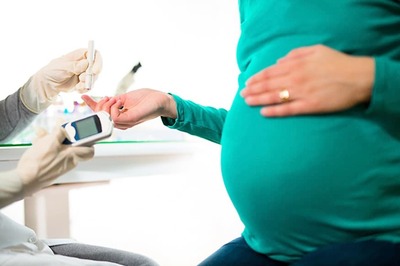
views
How to Know if Broccoli Is Bad
Broccoli that’s mushy, smells rotten, or has yellow or brown spots has gone bad. When it comes to judging if that broccoli you forgot in your crisper drawer is safe to eat, there are a few key factors to look for. Check your broccoli for the following signs of spoilage and toss it in the trash if you see any of them: Smell: A pungent, rotten, or “off” smell means your broccoli is destined for the trash. While fresh, raw broccoli does have a kind of vegetal smell, it’s not very intense when it’s good to eat. Color: Yellowing florets, yellow or brown spots on the crown of the broccoli, and/or a parched and white-looking stalk are all signs your broccoli’s got to go. Texture: Wilted florets that easily bend or come apart, mushy spots, a bendy stalk (that may also have dried out cracks in it), or an overall dry feel are signs your broccoli is dehydrated and gone bad. Mold: Fuzzy white or black patches mean your broccoli is molding and is definitely spoiled.
How long does broccoli last in the fridge?
Raw broccoli lasts about a week or more, while cooked broccoli lasts 3–4 days. When stored in a breathable bag or wrapped loosely in a cold part of your refrigerator, a raw head of broccoli can last for at least a week (perhaps even up to 2 if you’re lucky). Cooked leftovers that are sealed in an airtight container will stay safe to eat for 3–4 days (although the sooner you eat it, the better the taste and texture will be).
Storing Broccoli in the Fridge
Keep broccoli loosely wrapped in an unsealed plastic bag in a cold part of the fridge. Ideal locations include the crisper drawer or on a shelf near the back. If the broccoli is wet from being misted at the grocery store, dry it off before you store it or wrap the head in paper towels before bagging it. If you can, keep your broccoli away from fruits and vegetables that produce ethylene gas, like apples and bananas. Ethylene causes produce to ripen and go bad faster. Wrapping broccoli too tightly will trap it with its own ethylene gas, making it go bad more quickly. But, leaving it totally uncovered will expose it to the dry air of the fridge which will make it go limp. When refrigerated properly, raw broccoli will keep for about a week.
Store cooked broccoli in an airtight container in the fridge. Got leftovers? Wrap them in airtight packaging or place them in an airtight storage container and pop them in the fridge as fast as possible for quick cooling. Packaging the broccoli this way keeps bacteria out, keeps moisture in, and prevents your leftovers from absorbing odors from other foods in your refrigerator. Eat your leftovers within 3–4 days to avoid spoilage. Want to store your leftovers for longer? Put your container in the freezer instead of the fridge. Frozen, cooked broccoli will taste the best for 3–4 months, even though it’s technically safe indefinitely.
Keeping Broccoli Fresh for Longer
Keep the stalk of your broccoli in water in the fridge, just like a flower. Private chef and food educator Ollie George Cigliano says, “Broccoli is a flower, so keeping it in a cup or short vase with shallow water in the fridge keeps it fresh longer.” To protect the head from drying out, Cigliano says to keep an open or perforated bag on it “as the broccoli needs air to circulate around it. Otherwise, the flower will yellow and die.”
Reviving Limp Broccoli
Place the broccoli stalk in water for an hour to “re-crisp” it. If your broccoli is going a little soft but shows no other signs of spoilage, it may just be dehydrated and needs a little pick-me-up. Trim the very bottom of the stalk and place it in a shallow dish of water in the fridge for about an hour to revive it. Or, if you’ve already chopped it into florets, soak them in a bowl of cool water for 5 minutes. Pat them dry or give them a whirl in a salad spinner to remove excess water. Short on time? Sturdy vegetables like broccoli are safe to roast and eat (even if they’re starting to go a little soft). Just toss the broccoli in olive oil and salt and roast at 400–450 °F (204–232 °C) for 15–18 minutes or until they’re cooked to your satisfaction.
Freezing Raw Broccoli
Wash your broccoli and chop it into florets. Personal chef Markeicha Dulaney advises, “if you're buying a whole [head of] broccoli or cauliflower, make sure you wash your vegetables [and] that they're thoroughly dried. Then, proceed to cut them down into florets. Florets are just smaller, individual bite-sized pieces.” To wash a head of broccoli, simply run it under cold water. Or, chop it into florets first and rinse them with cold water in a colander. To chop the perfect florets, Chef Ryan of Marrow Private Chefs says, “Accuracy before speed. Using a paring knife, begin to carefully remove the florets from the main stalk. Once you have them all removed from the center stalk, if you are preparing a recipe that calls for them to be in smaller pieces, you can use your chef knife to cut the individual florets in halves or quarters.”
Blanch the florets to preserve their color, flavor, and nutrients. Blanching is the process of briefly boiling a food before immediately placing it in ice water to stop the cooking process, which preserves the food’s quality in storage. Bring a pot of water to a boil and prepare a large bowl of ice water while it’s heating up. Toss your florets in the boiling water for 2–3 minutes, then transfer them to the ice water with a slotted spoon and leave them for another 2–3 minutes. Looking for a quick side dish? Registered dietician and trained chef Jennifer Lease says, “Broccoli can become tender with just about 45 seconds in boiling water, and with a pinch of salt added to the water, it’s already seasoned!”
Flash freeze the florets on a tray lined with parchment paper, then bag them up. Lay your florets in a single layer on the parchment paper and pat them dry. Then, place the tray in the freezer until they’re frozen solid. Personal chef Markeicha Dulaney says you can then “bag them up into individual servings or however you want to store them. You can [freeze] them raw and then pull them out and cook them however you want.” Dulaney says you can steam your florets from frozen, or let them thaw a little bit and toss them with olive oil, salt and pepper, and some fresh herbs. Then, you can roast them in the oven.”
How to Pick Good Fresh Broccoli
Choose broccoli that’s firm, dark green, and has tightly-packed florets. Your broccoli will stay good the longest if you have great broccoli to begin with! When you’re at the grocery store, look for the following before tossing that head of broccoli into your cart: Smell: Good broccoli may have a slight vegetal smell, but it won’t be strong or off-putting. Color: Looks for stalks that are green and look fresh, without any yellowing or browning. The florets should be a vibrant green as well (it’s OK if there’s a little bit of yellowing at the tips if there are no other signs of spoilage, though). Texture and overall appearance: The stalk and florets should be firm and tightly packed together without flopping around. The stem should also look freshly cut and not at all dried out or shriveled up.




















Comments
0 comment